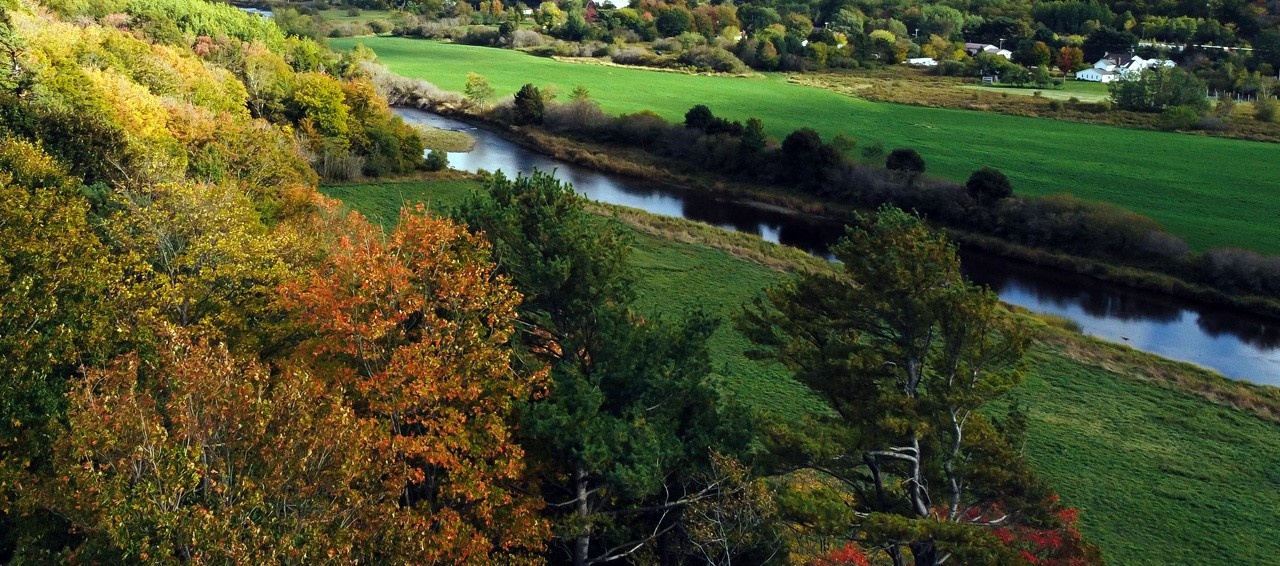News
» Go to news mainFaculty of Agriculture launches new program in Landscape Architecture
Dalhousie is well known for its Architecture program. Now the university’s architectural expertise is expanding in new ways thanks to the development of an undergraduate program in Landscape Architecture in the Faculty of Agriculture.
Dalhousie will soon become the only Atlantic Canadian university to offer an undergraduate program in Landscape Architecture, and only one of three to do so across Canada.
What exactly is “landscape architecture”? As the Canadian Society of Landscape Architecture explains, it involves, “combining art and science in the creation and preservation of built environments, taking a holistic approach that recognizes that the needs and activities of people can be complementary parts of larger environmental services.”
The new Dalhousie program will include areas of study that explore site and ecosystem analysis, engage in collaborative design exercises, apply concepts of sustainability and efficiency, create construction details and specifications, and enhance our environment both aesthetically and ecologically. Students will receive training to develop technical skills in design, communication, installations and management.

A new way of looking at architecture
Tracey MacKenzie, professor in the Department of Environment Sciences, is excited for the program to begin and believes it will fill a niche within the industry.
(L to R) Dean David Gray, Mr. Gordon Smith, Stephen Cushing, Minister of Agriculture Keith Colwell and Environmental Sciences Chair Dr. Raj Lada
“This program is about making connections between the landscape contracting industry and landscape architecture,” he says. “It will focus on designing functional spaces, using an interdisciplinary approach that includes horticultural and engineering skills and applying environmental knowledge to create site solutions. This program will encourage students to be in tune with natural ecosystems and apply a creative mindset to tackle various environmental and design challenges.”
From a Dal perspective, Prof.MacKenzie explains that this new program will complete a trio of related programming at the university: architecture, planning and now landscape architecture.
“Students will have the opportunity to pursue a career where you can definitely make a difference in the environment”, says Prof. MacKenzie. “The foundation of the program will be the idea of sustainability being a key part of landscape development. This will be a multi-disciplinary education which includes engineering, horticulture, design and the environment.”
The Landscape Architecture program is scheduled to begin in September 2015. Students will be able to complete a Bachelor of Technology degree on the Agricultural Campus in Truro, which can be followed by further study of a master’s degree.
An international connection
This new program has recently gained the attention of the president of the Fujian Agriculture and Forestry University (FAFU), Dr. Siren Lan, who himself is an internationally renowned landscape architect.
 In his recent visit to Dal’s campuses in Truro and Halifax, Dr. Lan worked with members of the Faculty of Agriculture to flesh out a new 3+1 program to link students from FAFU with Dalhousie. Building on a long history of academic cooperation, Dalhousie and FAFU will collaborate further in the delivery of Dalhousie’s Bachelor of Technology in Landscape Architecture and FAFU’s Bachelor of Engineering in Landscape Architecture.
In his recent visit to Dal’s campuses in Truro and Halifax, Dr. Lan worked with members of the Faculty of Agriculture to flesh out a new 3+1 program to link students from FAFU with Dalhousie. Building on a long history of academic cooperation, Dalhousie and FAFU will collaborate further in the delivery of Dalhousie’s Bachelor of Technology in Landscape Architecture and FAFU’s Bachelor of Engineering in Landscape Architecture.
The new proposed program, which has recently received support from the Ministry of Education in China, aims to welcome its first intake of students in China next Septemer.
Nancy Pitts, assistant dean, international at the Faculty of Agriculture was part of the Dal-AC team hosting Dr. Lan.
“With the establishment of this new program, there is an opportunity for Canadian students as well as students from our international partner universities to experience landscape architectural design from different traditions and cultural perspectives,” explains Dr. Pitts. “This is a very valuable aspect of the student learning experience.”
Responding to a growing profession
This program is in direct response to the need for skills and techniques to support a growing profession. The Atlantic Provinces Association of Landscape Architects (APALA) and the Canadian Society of Landscape Architects (CSLA) have both indicated a growing need for landscape architects. The program is seeking accreditation with the Landscape Architecture Accreditation Council, which is part of CSLA.
“As we face increasingly urgent issues such as climate change, habitat loss, pressures on agricultural land, the necessity of creating better urban environments and other similar concerns, landscape architects are the professionals that are trained to create sensitive science-based solutions through the planning and design of our built and natural environments,” explained Mr. Gordon Smith, Atlantic Provinces Association of Landscape Architects.
“As the first completely new program in landscape architecture to be established in Canada in 20 years, this program fulfills a national demand for landscape architectural graduates at the bachelor’s level,” he added. “As the first program east of Montreal, it is exciting to have a degree offering in landscape architecture in Atlantic Canada that can focus on addressing our region's issues and respond to our particular environmental terrestrial and coastal conditions.”
Recent News
- Submissions to TV screens
- Three alumni, four rings
- Upcoming Workplace Wellness activites ‑ May
- A home away from home – Barley Party 2024
- Dalhousie University investigates natural therapeutics to manage cancers of companion animals
- Dr. Derek Lynch honoured for Outstanding Leadership in Organic Science
- Lifting Nova Scotia Workshop
- Truro Students Shine at MacRae Library Research Poster Competition
